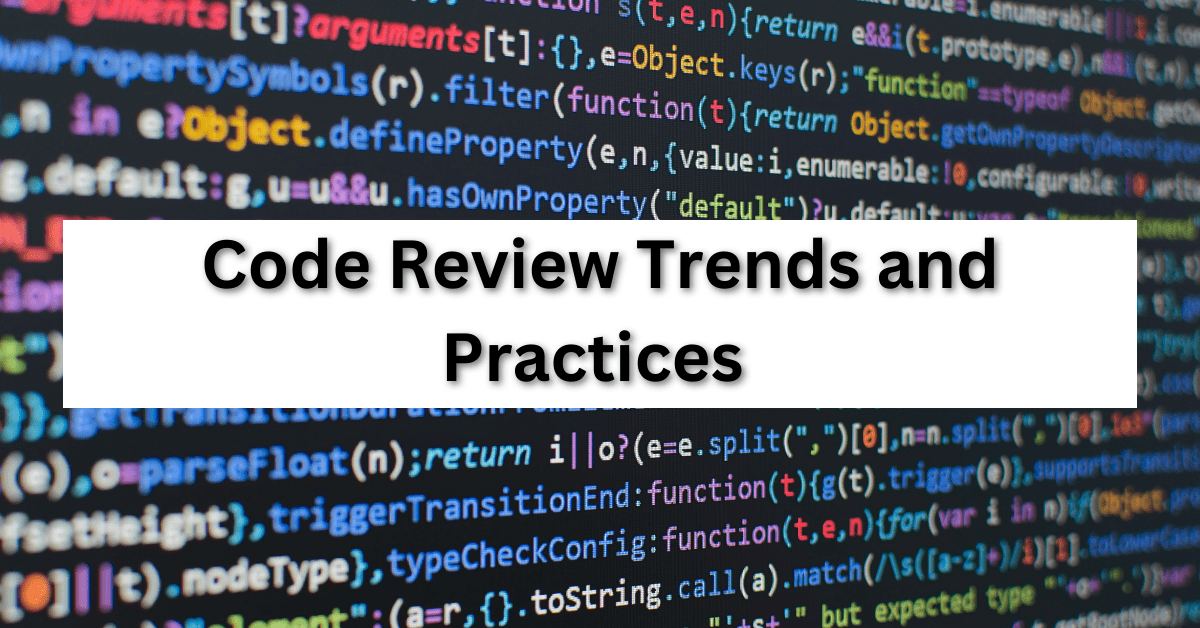Code Review Services: Understanding Trends and Practices

- February 22, 2023
- admin

Why Code Assessment Services Are Essential for Modern Software Development
In today’s fast-paced IT industry, software development teams are under constant pressure to release applications quickly. With the growing demand for web, mobile, TV, and desktop applications, developers are expected to work at an accelerated pace. However, to ensure software quality and security, software development companies must prioritize code assessment services.
While fast delivery can lead to quicker application releases, it often comes with the risk of poor practices and overlooked security vulnerabilities. These flaws can lead to user dissatisfaction, performance issues, and compromised data. This is where comprehensive code evaluation comes in. This guide explores the importance of code assessments and shares some of the best practices and trends followed by industry experts.
What is Code Evaluation?
Code evaluation is the process where developers assess the work done by another developer to identify potential problems, bugs, and areas for improvement. It ensures that the software functions properly, follows best practices, and adheres to the necessary security standards.
The process involves checking the work for readability, maintainability, performance, security vulnerabilities, and consistency with the project’s guidelines. Both manual and automated tools can assist in conducting assessments.
Key Trends in Code Evaluation Services
Here are some current trends that are helping teams optimize their development process through better quality control:
Continuous Integration and Code Evaluation
In a Continuous Integration (CI) environment, developers frequently merge their updates into a shared repository throughout the day. CI ensures that changes are tested and integrated quickly, minimizing the chance of integration issues. Code evaluation is essential within this methodology, ensuring that new changes meet quality standards before merging.
Automated Evaluation
With advancements in machine learning and artificial intelligence, automated tools are becoming a staple for many development teams. These tools analyze changes, flag potential issues, and suggest improvements, saving time and effort. Popular tools like SonarQube, Code Climate, and Codacy help speed up the process, especially for large projects.
Security-Focused Evaluation
Security should be a top priority when assessing any software. Security-focused evaluations specifically look for vulnerabilities, such as SQL injection, cross-site scripting, and insecure data handling. Early detection of these issues reduces the likelihood of breaches. Specialized tools like Checkmarx and Veracode are designed to focus on security during the assessment process.
Evaluation Metrics
Tracking the effectiveness of the process through metrics can help identify bottlenecks and improve efficiency. Common metrics include the time spent on assessments, the number of issues found, and the acceptance rate. These metrics help development teams refine their approach to ensure high-quality results.
Reviewing Documentation and Tests
The evaluation process is not just about checking changes; it also involves ensuring that documentation and tests are up-to-date, comprehensive, and aligned with updates. Well-maintained documentation and thorough test coverage help improve maintainability and reliability.
Best Practices in Code Evaluation Services
Here are some best practices to follow for effective assessments:
Start Early
Starting assessments early in the development lifecycle can help identify issues before they become larger problems. Early evaluations help set guidelines and best practices that improve the development process in the long run.
Focus on High-Impact Areas
Not all parts of the software have the same level of importance. When performing evaluations, focus on areas that impact performance, security, and overall functionality. Prioritizing high-impact areas ensures that they meet the highest standards.
Set Clear Objectives
Establishing clear objectives for each evaluation helps ensure that the process is focused and productive. These objectives might include targeting specific sections to examine or meeting particular quality standards. Well-defined goals make the process more efficient.
Encourage Collaboration
Collaborative evaluations, where multiple developers contribute their expertise, often lead to higher-quality results. By leveraging the knowledge of multiple team members, potential issues can be identified more effectively. Collaborative assessments also foster knowledge sharing and team communication.
Provide Constructive Feedback
Providing helpful and respectful feedback is key to improving software quality. Offering suggestions for improvement in a way that promotes learning can help developers grow and produce better work in the future.
Keep Assessments Small
Smaller, more manageable evaluations are typically more effective than large, overwhelming assessments. By breaking work into smaller chunks, evaluators can focus on specific areas, reduce fatigue, and ensure more detailed feedback.
Use Tools to Improve Efficiency
There are a variety of tools available to streamline the process. Automated analysis, version control systems, and dedicated platforms can help improve the quality and speed of assessments. These tools help identify potential issues faster, freeing up time for manual intervention when needed.
Conclusion
While code evaluation can be time-consuming, it is an essential part of maintaining high-quality, secure software. Striking the right balance between thorough assessments and maintaining development speed is critical. If evaluations are too strict, they can slow down development; if too lenient, the quality may suffer. Using the right tools, following best practices, and focusing on key areas ensures that the development process is both efficient and effective.
In conclusion, staying up to date with the latest trends in code assessment—such as continuous integration, automated tools, security-focused evaluations, and effective metrics—helps development teams deliver high-quality, secure software while keeping up with the demands of the modern IT landscape.











